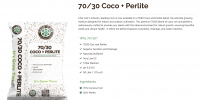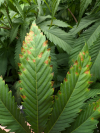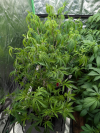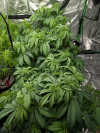Not exactly sure what’s going on—things were looking great with the plants, and then suddenly… they weren’t. Nothing obvious changed, but here’s a little context. I’m growing Skunk #1 from seed in a 1-gallon fabric nursery pot using a 70/30 coco-perlite mix, feeding with Jack’s 321. Everything was going smooth until I switched from top-feeding to the Tray2Grow AutoPot system. At first, no issues, but then I noticed the plants started looking a bit off—first about an hour before lights out, then it became two, and eventually they just never perked up at all.
Thinking they might’ve been rootbound, I transplanted into 3-gallon square fabric pots about 3–4 days ago, but they still look the same. The pots always feel heavy, so I know they’re getting water—maybe too much? It’s confusing because I figured the AutoPot system and fabric pots would help avoid overwatering. If anyone has any insights, I’d really appreciate it. I’m open to ideas, happy to answer questions, and willing to try different things to figure this out.


Thinking they might’ve been rootbound, I transplanted into 3-gallon square fabric pots about 3–4 days ago, but they still look the same. The pots always feel heavy, so I know they’re getting water—maybe too much? It’s confusing because I figured the AutoPot system and fabric pots would help avoid overwatering. If anyone has any insights, I’d really appreciate it. I’m open to ideas, happy to answer questions, and willing to try different things to figure this out.











